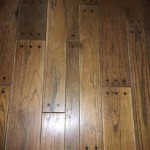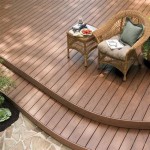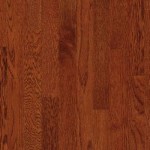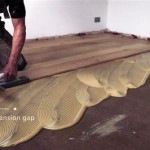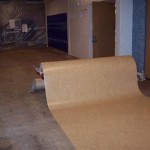Cost To Replace Wood Floor In House San Jose, Costa Rica
Replacing wood flooring in a house is a significant investment. When considering this project in San Jose, Costa Rica, several factors influence the overall cost. These elements range from the type of wood chosen to the complexity of the installation process, labor rates, and the condition of the subfloor. A comprehensive understanding of these cost drivers is essential for budgeting accurately and making informed decisions about the flooring project.
The selection of wood is a primary determinant of the final price. Various wood species exhibit different characteristics, durability levels, and aesthetic qualities, which directly impact their market value. Moreover, the chosen installation method, such as nail-down, glue-down, or floating, will also contribute to the overall project expenses. Accurate assessment of subfloor condition and proper preparation are critical to ensure a successful and long-lasting installation. Failure to do so to can lead to expensive remediation work and compromise the integrity of the new flooring.
In San Jose, Costa Rica, local labor rates and material availability also play a crucial role in determining the final cost to replace wood flooring. It is essential to obtain quotes from multiple reputable contractors to compare pricing and ensure transparency in the bidding process. Understanding the nuances of these factors will enable homeowners to navigate the project effectively and achieve the desired outcome within a reasonable budget.
Wood Material Costs
The cost of the wood itself is a significant component in the total cost of replacing wood flooring. Several types of wood flooring are available, each with varying price points. Solid hardwood is generally considered the most premium option, offering longevity and a classic aesthetic. It is milled from a single piece of wood, making it durable and capable of being refinished multiple times. Popular hardwood choices include oak, maple, cherry, and walnut, each possessing unique grain patterns and hardness levels. Exotic hardwoods, like Brazilian cherry or teak, are also available but typically command a higher price due to their rarity and import costs.
Engineered hardwood is another common option. It consists of a thin layer of hardwood veneer bonded to multiple layers of plywood or fiberboard. This construction makes it more dimensionally stable than solid hardwood, reducing its susceptibility to moisture and temperature fluctuations. While engineered hardwood often costs less than solid hardwood, the price can vary depending on the thickness of the veneer and the quality of the core material. Thicker veneers allow for more refinishing opportunities, but also increase the initial expense.
Laminate flooring, while not actual wood, offers a more affordable alternative that mimics the look of hardwood. It consists of a photographic applique layer protected by a clear wear layer, bonded to a core board. Laminate is typically less expensive than both solid hardwood and engineered hardwood. However, it lacks the same durability and cannot be refinished. The quality of the laminate, particularly the thickness of the wear layer, will impact its longevity and resistance to scratches and wear. The cost of the desired appearance influences the price as well, with more realistic wood-grain patterns costing more.
Bamboo flooring is another sustainable option that has gained popularity. While technically a grass, bamboo flooring can be processed to resemble hardwood. It is available in various styles, including horizontal, vertical, and strand-woven. Strand-woven bamboo is the hardest and most durable, making it a good choice for high-traffic areas. The cost of bamboo flooring is generally comparable to engineered hardwood, but this can vary based on the specific type and manufacturer.
When selecting the wood, it's vital to consider not only the initial price but also the long-term value, durability, and maintenance requirements. Solid hardwood offers the most longevity and potential for refinishing, but it may require more careful attention to humidity control. Engineered hardwood provides a balance of cost and stability, while laminate offers a budget-friendly option for achieving a wood-like appearance.
Installation Costs
The installation cost is another major factor that influences the overall expense of replacing wood flooring. There are several installation methods, each with its own labor requirements and associated expenses. The most common methods include nail-down, glue-down, and floating.
Nail-down installation is typically used with solid hardwood flooring. It involves nailing the wood planks directly to a wood subfloor. This method provides a secure and stable installation, but it requires specialized tools and expertise. The labor cost for nail-down installation is usually higher compared to other methods, reflecting the complexity and skill required. In San Jose, the experience and reputation of the installer will also influence the cost. Contractors with a proven track record of quality workmanship often charge a higher premium.
Glue-down installation involves adhering the wood flooring directly to the subfloor using a special adhesive. This method is commonly used with engineered hardwood and some types of solid hardwood. Glue-down provides a stable and moisture-resistant installation but requires a clean and level subfloor. The labor cost for glue-down installation can vary depending on the size and complexity of the project, as well as the type of adhesive used. Some adhesives are more expensive but offer better performance and longevity.
Floating installation is a method where the wood flooring planks are connected to each other, but not directly attached to the subfloor. This method is commonly used with engineered hardwood and laminate flooring. Floating installations are often easier and faster than nail-down or glue-down, resulting in lower labor costs. However, floating floors may require an underlayment for sound dampening and moisture protection, which adds to the overall material expenses.
The condition of the existing subfloor also plays a significant role in the installation cost. If the subfloor is uneven, damaged, or contaminated, it may need to be repaired or replaced before the new flooring can be installed. Subfloor preparation can add considerably to the overall project cost, depending on the extent of the work required. In some cases, self leveling compounds are needed to create a flat, even surface. In more severe cases, such as water damage or rot, sections of the subfloor may need to be completely rebuilt. This is often an unforeseen expense and must be factored into the decision making process.
Removing existing flooring also contributes to the labor cost. The removal process can be straightforward, such as pulling up old carpet, or more involved, like removing ceramic tile or glued-down flooring. The complexity of the removal process will influence the time required and the associated labor expenses.
Additional Costs
Besides the cost of materials and installation, several other expenses can contribute to the total cost of replacing wood flooring. These additional costs should be considered when budgeting for the project.
One such expense is the cost of trim and moldings. Baseboards, quarter-round, and other trim pieces are needed to finish the edges of the flooring and create a seamless transition between the floor and the walls. The cost of trim can vary depending on the material (wood, vinyl, or composite) and the style. Installing trim requires additional labor which must be included in the overall project estimate. The trim must also be painted or stained to match the coloring of the floor.
Another factor is the cost of moving furniture and appliances. If the homeowner is unable or unwilling to move heavy items, they may need to hire professional movers. This can add a significant expense, especially for larger projects. Items need to be moved out of the work area to allow the contractors to properly install the floor.
Disposal fees can also contribute to the overall cost. Removing and disposing of old flooring can incur disposal fees, depending on the local regulations and the volume of waste. Contractors typically include disposal fees in their estimates, but it's important to confirm this beforehand. Environmentally responsible disposal options may also be available, although these may come at a higher cost.
Unexpected repairs or modifications to the subfloor can also add to the budget. During the floor replacement process, hidden issues may be uncovered, such as plumbing leaks, electrical wiring problems, or structural damage. Addressing these issues can require additional labor and materials, leading to unforeseen expenses. It's prudent to set aside a contingency fund to cover such potential surprises. The older the home, the higher the possibility of uncovering unexpected problems.
Finally, permit fees may be required, depending on the local building codes and regulations in San Jose, Costa Rica. It's important to check with the local authorities to determine if permits are necessary for the flooring replacement project. Failing to obtain the necessary permits can result in fines or delays in the project.
In summary, replacing wood flooring in a house in San Jose, Costa Rica, involves a multitude of cost factors. From the type of wood selected to the complexity of the installation process, labor rates, and additional expenses, a careful evaluation of all these elements is crucial for accurate budgeting and a successful project outcome.

Renovating A House In Costa Rica Two Weeks

Choosing The Right Hardwood For Your Home

Building A House In Costa Rica Understanding The Basics Two Weeks

House Hunting In Costa Rica The New York Times

Choosing The Right Hardwood For Your Home

Costa Rica Guesthouse San José Updated S 2025

Choosing The Right Hardwood For Your Home

Building A House In Costa Rica Understanding The Basics Two Weeks

Hotel Majestad San José Updated S 2025

Luxury Homes For In San José Province Costa Rica Jamesedition
Related Posts

